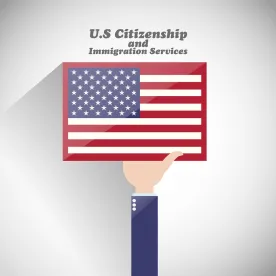Most operations are either fee-based or considered “essential” and are therefore expected to proceed normally.
Barring passage of an eleventh-hour spending bill, the current continuing resolution will expire on January 20 and the US government will face a shutdown, closing all non-essential discretionary federal programs until Congress appropriates additional funds.
Based on normal shutdown procedures and how related agencies have handled similar situations in the past, here is how we expect a shutdown would impact immigration matters.
Adjudications at US Citizenship and Immigration Services (USCIS), the agency at the US Department of Homeland Security that reviews nonimmigrant and immigrant petitions and applications for immigration benefits, is fee-funded, and should continue on a normal schedule. Visa processing at US Department of State consular posts would likely not be affected for the same reason, at least initially, though an extended shutdown could lead to a suspension of services other than emergency support for US citizens. If posts are forced to scale back, past experience suggests that visa applications may be affected first. During the 1995 and 1996 shutdowns, which together lasted 27 days, an estimated 20,000–30,000 visa applications went unprocessed every day. Officers with US Customs and Border Protection and Immigration and Customs Enforcement are “essential” personnel, which means these agencies should also operate on a normal schedule.
An important exception is the temporary and permanent labor certification function at the Office of Foreign Labor Certification (OFLC) with the US Department of Labor. These are feeless applications, and in the case of a shutdown, OFLC will cease processing applications entirely, and associated personnel will not be available to respond to inquiries until the office reopens. All petitions with USCIS that require a certified Labor Condition Application (H-1B, E-3, and H-1B1) will therefore be impacted even if processing at USCIS is not affected. This may impact employers’ ability to file timely extensions in certain visa classifications. Employers’ inability to file applications for permanent labor certification (PERM) may also carry additional consequences. For example, PERM applications must be filed within six months of certain labor market recruitment activities. Similarly, H-1B extensions beyond the sixth year often rely on a provision of the American Competitiveness in the Twenty-first Century Act that permits such extensions when a PERM filed on behalf of the beneficiary has been pending for more than 365 days.





 />i
/>i
